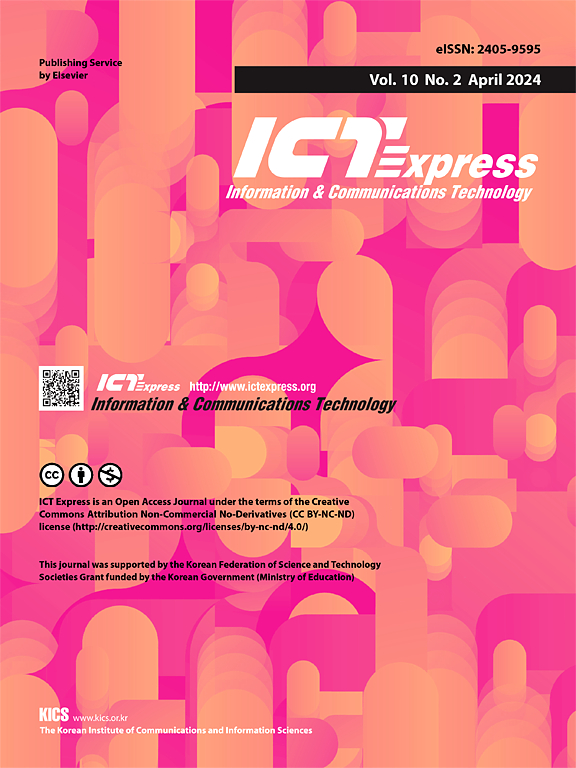Hybrid Approach with Membership-Density Based Oversampling for handling multi-class imbalance in Internet Traffic Identification with overlapping and noise
IF 4.1
3区 计算机科学
Q1 COMPUTER SCIENCE, INFORMATION SYSTEMS
引用次数: 0
Abstract
Internet Traffic identification is a crucial method for monitoring Internet application activities and is essential for Internet management and security. Internet traffic data typically displays imbalanced distributions. The uneven distribution of instances in each class indicates the class imbalance problem. This problem can cause a decrease in classification performance because the classifier assumes the dataset has a balanced class distribution. Internet Traffic Identification dataset is often accompanied by overlapping and noise. The hybrid approach to handling class imbalances involving data-level and ensemble-based approaches is usually chosen to overcome this problem. Data-level with oversampling using SMOTE is the choice because of its ability to synthesize new samples for minority classes. However, SMOTE-generated samples tend to be noisy and overlap with the majority of samples. This research proposes the application of a Hybrid Approach with Membership-density-based Oversampling to tackle this challenge. This research emphasizes the importance of applying membership degrees in determining samples that will group samples into safe, overlapping, and noisy areas. Then, top samples will be selected based on density ratio, stability, and score for safe and overlapping safe areas. The study findings that the proposed method effectively addresses multi-class imbalances in six Internet Traffic Identification datasets, yielding slightly improved average accuracy, and class balance accuracy results compared to other testing methods, though the difference is not statistically significant. The noise and overlapping scenes experiments demonstrate that the average accuracy obtained is superior, showing a considerable difference compared to all test methods.
基于成员密度超采样的混合方法,用于处理具有重叠和噪声的互联网流量识别中的多类不平衡问题
互联网流量识别是监控互联网应用活动的重要方法,对互联网管理和安全至关重要。互联网流量数据通常呈现不平衡分布。每个类别中实例的不均匀分布表明存在类别不平衡问题。这个问题会导致分类性能下降,因为分类器假定数据集具有均衡的类分布。互联网流量识别数据集往往伴随着重叠和噪声。处理类不平衡的混合方法通常包括数据级方法和基于集合的方法,以克服这一问题。选择使用 SMOTE 进行超采样的数据级方法,是因为它能为少数类别合成新样本。然而,SMOTE 生成的样本往往存在噪声,并与大多数样本重叠。本研究提出了一种基于成员密度的过度采样混合方法来应对这一挑战。本研究强调在确定样本时应用成员度的重要性,这将把样本归类为安全、重叠和嘈杂区域。然后,将根据密度比、稳定性以及安全区域和重叠安全区域的得分来选择顶级样本。研究发现,所提出的方法能有效解决六个互联网流量识别数据集中的多类不平衡问题,与其他测试方法相比,平均准确率、FbMeasur 和类平衡准确率略有提高,但差异在统计学上并不显著。噪声和重叠场景实验表明,所获得的平均准确率更胜一筹,与所有测试方法相比都有相当大的差异。
本文章由计算机程序翻译,如有差异,请以英文原文为准。
求助全文
约1分钟内获得全文
求助全文
来源期刊

ICT Express
Multiple-
CiteScore
10.20
自引率
1.90%
发文量
167
审稿时长
35 weeks
期刊介绍:
The ICT Express journal published by the Korean Institute of Communications and Information Sciences (KICS) is an international, peer-reviewed research publication covering all aspects of information and communication technology. The journal aims to publish research that helps advance the theoretical and practical understanding of ICT convergence, platform technologies, communication networks, and device technologies. The technology advancement in information and communication technology (ICT) sector enables portable devices to be always connected while supporting high data rate, resulting in the recent popularity of smartphones that have a considerable impact in economic and social development.
 求助内容:
求助内容: 应助结果提醒方式:
应助结果提醒方式:


